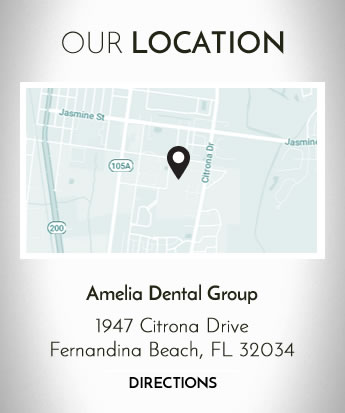
Thank goodness for modern dentistry that allows people to have attractive smiles even though their teeth may not cooperate. For some people, regular dental care is enough to keep their teeth and gums healthy and looking nice. However, over time many people’s teeth become stained or discolored. Chips and cracks can occur that cause unsightly and embarrassing problems. If things like this happen to you, it’s time to consider restoring your smile with porcelain veneers.
Veneers are thin porcelain shells that are permanently adhered to the front surfaces of your teeth, hiding imperfections and giving you a whole new look. It is a simple, non-invasive procedure that can make a dramatic difference in your appearance without any pain or great inconvenience.
There are a variety of benefits to getting porcelain veneers. Here are some of the great advantages you can expect if you and your dentist decide that veneers are right for you:
• Veneers completely hide stains and discolorations on your teeth. Years of eating and drinking foods that tend to stain your teeth can be erased with veneers. For tough stains, sometimes whitening techniques simply aren’t enough. Veneers provide an easy remedy that will immediately and effectively hide your problem teeth.
• You and your dentist can choose the exact color that you’d like your veneers to be. You can select the best shade to match your other features and your goals for your smile.
• Obtaining veneers does not require invasive procedures like reshaping, scraping, or extensive contouring of your teeth. There isn’t any pain associated with the veneer process.
• Only one or two dental appointments are necessary to get veneers.
• Porcelain veneers are durable and strong, often lasting from ten to fifteen years.
• Veneers give you back your confidence so that you are proud to smile and display your beautiful look.
Cosmetic dentist in Fernandina Beach – Dr. Kitson

Across drugstore and grocery aisles, toothpaste options line the shelves. Brushing plays an important part in maintaining dental hygiene. With all the choices, you may feel like it’s a tough to make a decision. Knowing the difference between whitening toothpaste and natural toothpaste can help you decide the best option for your smile.
Cavity-fighting toothpaste
When used correctly, all toothpastes ward off cavities by removing plaque from teeth. Choosing toothpaste with fluoride will protect enamel from erosion and strengthen your teeth. Children under six shouldn’t use fluoride toothpaste because they can ingest too much and end up with white spots on their teeth from overexposure to the fluoride.
Whitening toothpaste
Although these options will remove staining, whitening toothpastes don’t work as well as professional teeth whitening. For temporary results and a brighter appearance, many people swear incorporate whitening toothpaste into their hygiene routines.
Antibacterial toothpaste
Some of the newer products have an antibacterial agent called triclosan that may help protect gums from the bacterial infections that cause gum disease. Since these toothpastes haven’t been on the market that long, the jury is still out on their effectiveness.
Natural toothpaste
Found in most health food stores, all-natural toothpastes are typically fluoride-free. Often, natural toothpastes contain ingredients such as peppermint oil, myrrh, or aloe to clean teeth and freshen breath.
Toothpaste for sensitive teeth
If eating ice cream or drinking coffee causes tooth pain, toothpaste designed to minimize sensitivity might be good for you. These compounds work by desensitizing teeth and blocking the tubules that reach the nerves in your teeth.
If you need a dentist in Fernandina Beach contact us today

Nobody is happy with yellow or brown teeth. Ugly stains from smoking or consuming foods and drinks prone to discoloring your teeth can make you a good candidate for teeth whitening. There are many techniques available to restore your bright smile. The main two categories of teeth whitening are either at-home kits or professional treatment in a dental office. Let’s learn about these to see which you’d like to use to brighten your smile.
At-home teeth whitening
There are a variety of products you can try yourself to whiten your teeth. These treatments usually take a few weeks of use before your teeth are noticeably whiter. Also remember that most of these products cannot achieve as high of a level of whiteness as those performed professionally.
- Kits – whitening kits contain a tooth mold and gel to place inside the mold. You wear the filled mold for about 30 minutes for 2-3 weeks.
- Strips – thin whitening strips are coated with peroxide gel, and then you apply the strips directly to your teeth for 30 minutes for 14 days. Results become evident in a few days and last about four months.
- Toothpaste – brushing with whitening toothpaste must be done consistently and you must be patient because reaching the desired outcome usually takes a couple of months.
Professional teeth whitening
Treatments done by a dentist are the fastest and most effective way to regain your pearly whites.
- Laser whitening – the dentist coats your teeth with a hydrogen peroxide solution and then shines a laser light on them. This oxidizes the stains and gives them a whiter appearance.
- Porcelain veneers – if your teeth are severely stained and other whitening techniques haven’t done the trick, your dentist may recommend porcelain veneers. These shells permanently cover your teeth and provide a beautiful smile.
Teeth Whitening dentist in Fernandina Beach

Babies obviously can’t take care of themselves, so parents have to handle all aspects of their care. Don’t forget their oral health! Parents need to lay the groundwork for lifelong good dental habits and healthy smiles for their children. Here are some answers to common questions about baby teeth.
Do baby teeth matter?
Primary, or baby, teeth are important. They help children chew naturally and speak clearly. They provide the place for adult teeth to grown in properly later.
Should I brush my baby’s teeth?
You should brush your baby’s teeth without toothpaste, using a small amount of water instead. Use a small, soft-bristled toothbrush at bedtime to remove plaque and bacteria from your baby’s teeth and gums.
When can I start using toothpaste?
Fluoride toothpaste can be implemented after age two, when a child can be trusted not to swallow the toothpaste. Only use a small amount of toothpaste, and watch the child carefully to ensure proper brushing and spitting out the toothpaste.
When should I take my child to the dentist?
Experts recommend taking your child to the dentist when their first tooth appears, or by their first birthday. Your child should be taken for dental visits every six months, or more often if your dentist has concerns.
Do I need a certain type of dentist for my child?
You may choose a pediatric dentist who has been trained specifically to treat children. Their goal is to teach children about oral hygiene and the importance of taking care of their teeth, as well as provide a comfortable experience in visiting the dentist. However, you may also choose a regular dentist to take care of your child’s oral health. It is up to you to decide which kind of dentist is right for your family.
Our dental office is located in Fernandina Beach

Wisdom teeth, your third set of molars, are named that because they are the final teeth to erupt. They usually come in between ages 17 to 25, and are located in the very back of your mouth on the top and bottom. Your dentist will examine you to find out if your wisdom teeth are properly positioned and healthy. If they aren’t, your dentist will recommend removal.
How do you know wisdom teeth should be removed?
Some of the signs there is a problem with your wisdom teeth include pain, infection, cysts, gum disease, damage to nearby teeth, and tooth decay. If you experience any of these symptoms, see your dentist for an examination.
What are impacted wisdom teeth?
Sometimes your teeth just don’t have room to grow in properly. They can erupt at angles within your jaw, sometimes even horizontally. If wisdom teeth aren’t able to erupt normally they can become trapped, or impacted, inside your jaw. Symptoms of impacted wisdom teeth are pain, infection, and swelling. When teeth are impacted, they can lead to serious problems. Many dentists want to avoid impacted teeth and therefore remove your wisdom teeth before they erupt or grow too big.
Are there less obvious reasons to remove wisdom teeth?
It’s not always clear when these teeth way in the back of your mouth are causing problems, or might in the future. Many dentists remove them in teens or young adults so they don’t cause problems later, or become too firmly planted in the jaw. Also, sometimes wisdom teeth are removed as part of orthodontic, periodontal, or restorative treatment plans.
What happens if I don’t have them removed?
Some dentists prefer to wait and see what happens with time to your wisdom teeth. Make sure you continue to have these teeth monitored, because the risk of problems doesn’t go away with age. Removing wisdom teeth isn’t always necessary, because if there’s room in your mouth and they come in properly, they work just like any other teeth. The key is to watch them to make sure problems don’t arise in the future.
Dental office for wisdom teeth removal

Endodontics is a dental term often linked to a more common dental procedure you’ve probably already heard of called root canal treatment. Endodontics focuses on the pulp of your tooth, which holds nerves and blood vessels supplying nutrients and oxygen to your tooth. When the pulp is infected or injured, endodontic treatment may be performed to save the tooth.
During endodontic treatment, the hollow part inside your tooth is cleaned, disinfected, and filled. It is often the best way to save a tooth that has been damaged by decay, trauma, or other causes. Common symptoms that endodontic treatment is necessary include pain, tooth sensitivity, or exposure of the pulp due to tooth fracture.
After examining your tooth and X-ray results, your dentist will recommend the kind of endodontic treatment you need based on how seriously the pulp is impacted. One type is called vital pulp therapy, which has a goal of preserving and protecting your tooth’s pulp. This procedure involves removing only the pulp from the crown of your tooth and not from the root. It is only advised when there is no swelling or abscess present, and the tooth is secure.
Another type of endodontic treatment is non-vital pulp therapy, which is known as root canal treatment. It is performed when there is no chance of saving the pulp of your tooth. The whole pulp will be removed from inside your tooth, and the canals will be cleaned and filled with a special material. Then a stainless steel crown will be placed on the tooth.
Sometimes endodontic treatment is not recommended, and the tooth needs to be extracted instead. This choice depends on factors such as tooth location, age of the tooth, extent of damage, and the patient’s overall health. Your dentist will be able to advise you on the best treatment for your condition.
If you live in the Fernandina Beach area contact us today







